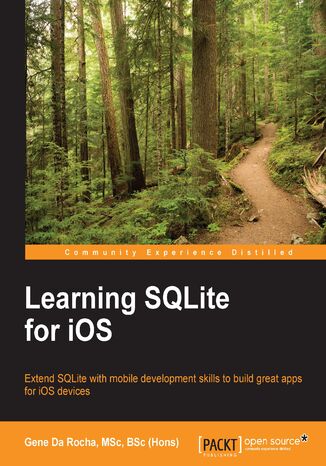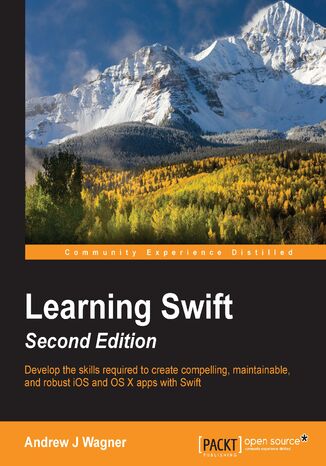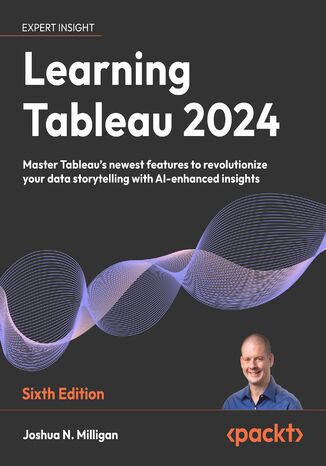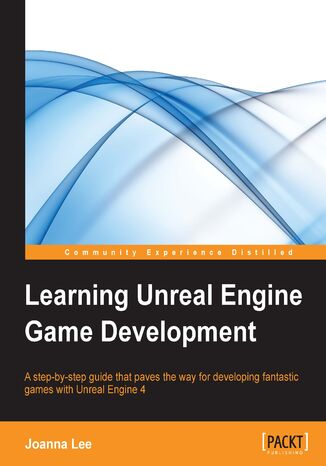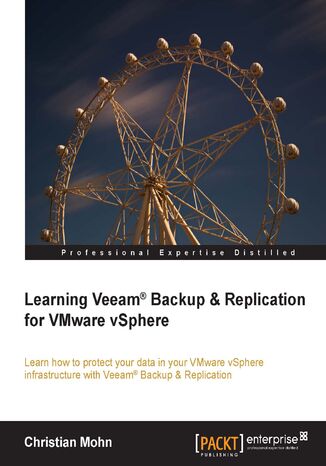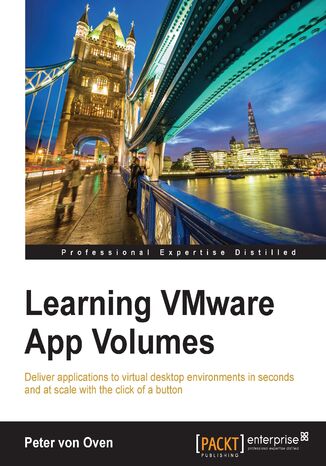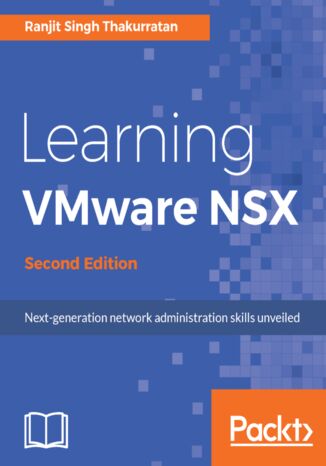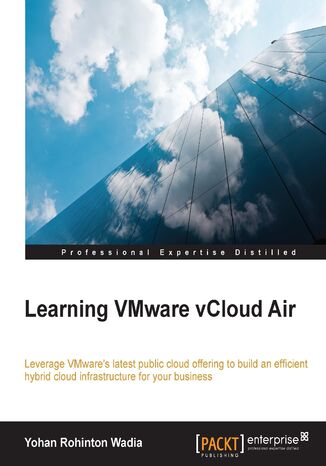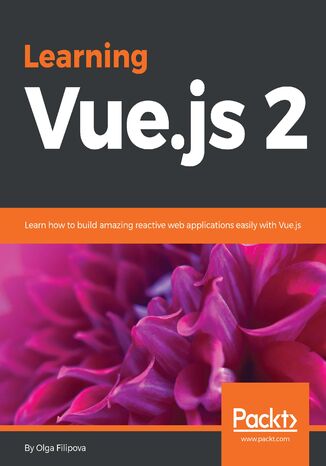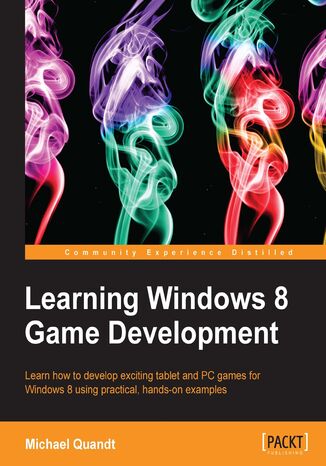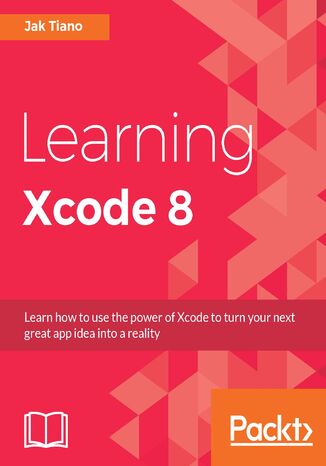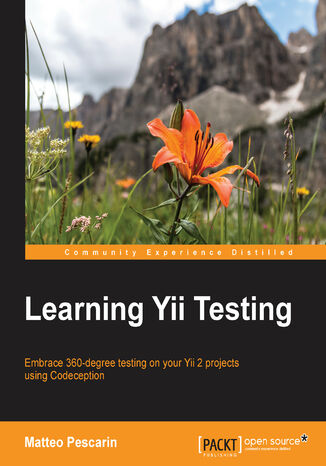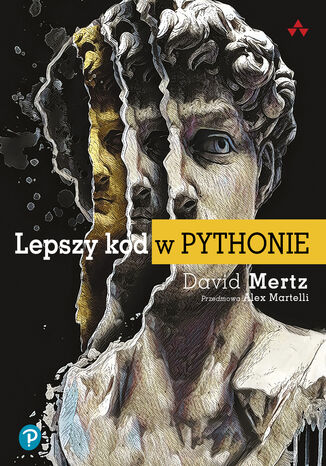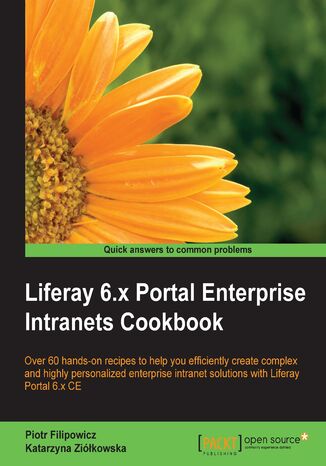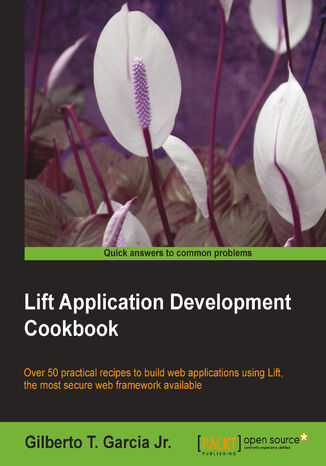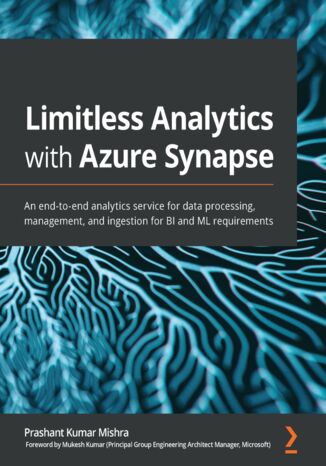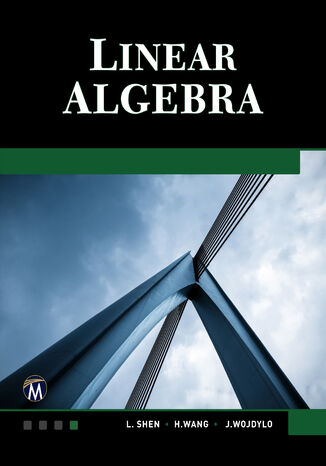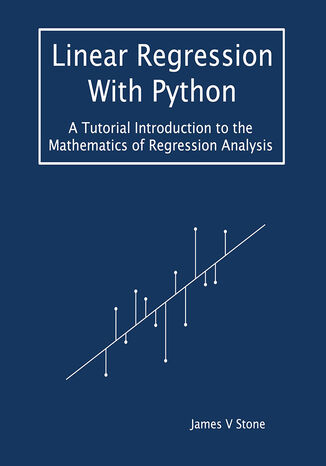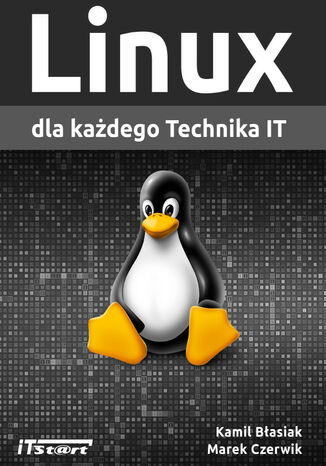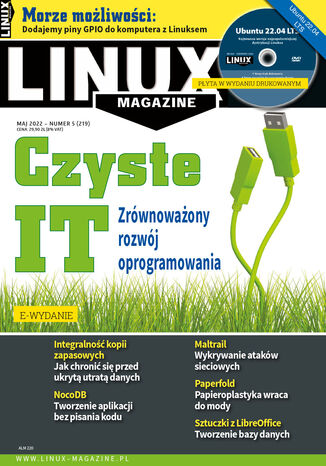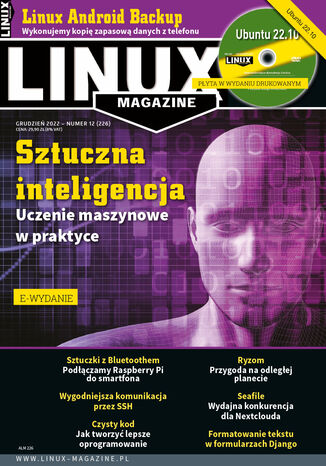Kategorie
Ebooki
-
Biznes i ekonomia
- Bitcoin
- Bizneswoman
- Coaching
- Controlling
- E-biznes
- Ekonomia
- Finanse
- Giełda i inwestycje
- Kompetencje osobiste
- Komputer w biurze
- Komunikacja i negocjacje
- Mała firma
- Marketing
- Motywacja
- Multimedialne szkolenia
- Nieruchomości
- Perswazja i NLP
- Podatki
- Polityka społeczna
- Poradniki
- Prezentacje
- Przywództwo
- Public Relation
- Raporty, analizy
- Sekret
- Social Media
- Sprzedaż
- Start-up
- Twoja kariera
- Zarządzanie
- Zarządzanie projektami
- Zasoby ludzkie (HR)
-
Dla dzieci
-
Dla młodzieży
-
Edukacja
-
Encyklopedie, słowniki
-
E-prasa
- Architektura i wnętrza
- BHP
- Biznes i Ekonomia
- Dom i ogród
- E-Biznes
- Ekonomia i finanse
- Ezoteryka
- Finanse
- Finanse osobiste
- Firma
- Fotografia
- Informatyka
- Kadry i płace
- Kobieca
- Komputery, Excel
- Księgowość
- Kultura i literatura
- Naukowe i akademickie
- Ochrona środowiska
- Opiniotwórcze
- Oświata
- Podatki
- Podróże
- Psychologia
- Religia
- Rolnictwo
- Rynek książki i prasy
- Transport i Spedycja
- Zdrowie i uroda
-
Historia
-
Informatyka
- Aplikacje biurowe
- Bazy danych
- Bioinformatyka
- Biznes IT
- CAD/CAM
- Digital Lifestyle
- DTP
- Elektronika
- Fotografia cyfrowa
- Grafika komputerowa
- Gry
- Hacking
- Hardware
- IT w ekonomii
- Pakiety naukowe
- Podręczniki szkolne
- Podstawy komputera
- Programowanie
- Programowanie mobilne
- Serwery internetowe
- Sieci komputerowe
- Start-up
- Systemy operacyjne
- Sztuczna inteligencja
- Technologia dla dzieci
- Webmasterstwo
-
Inne
-
Języki obce
-
Kultura i sztuka
-
Lektury szkolne
-
Literatura
- Antologie
- Ballada
- Biografie i autobiografie
- Dla dorosłych
- Dramat
- Dzienniki, pamiętniki, listy
- Epos, epopeja
- Esej
- Fantastyka i science-fiction
- Felietony
- Fikcja
- Humor, satyra
- Inne
- Klasyczna
- Kryminał
- Literatura faktu
- Literatura piękna
- Mity i legendy
- Nobliści
- Nowele
- Obyczajowa
- Okultyzm i magia
- Opowiadania
- Pamiętniki
- Podróże
- Poemat
- Poezja
- Polityka
- Popularnonaukowa
- Powieść
- Powieść historyczna
- Proza
- Przygodowa
- Publicystyka
- Reportaż
- Romans i literatura obyczajowa
- Sensacja
- Thriller, Horror
- Wywiady i wspomnienia
-
Nauki przyrodnicze
-
Nauki społeczne
-
Podręczniki szkolne
-
Popularnonaukowe i akademickie
- Archeologia
- Bibliotekoznawstwo
- Filmoznawstwo
- Filologia
- Filologia polska
- Filozofia
- Finanse i bankowość
- Geografia
- Gospodarka
- Handel. Gospodarka światowa
- Historia i archeologia
- Historia sztuki i architektury
- Kulturoznawstwo
- Lingwistyka
- Literaturoznawstwo
- Logistyka
- Matematyka
- Medycyna
- Nauki humanistyczne
- Pedagogika
- Pomoce naukowe
- Popularnonaukowa
- Pozostałe
- Psychologia
- Socjologia
- Teatrologia
- Teologia
- Teorie i nauki ekonomiczne
- Transport i spedycja
- Wychowanie fizyczne
- Zarządzanie i marketing
-
Poradniki
-
Poradniki do gier
-
Poradniki zawodowe i specjalistyczne
-
Prawo
- BHP
- Historia
- Kodeks drogowy. Prawo jazdy
- Nauki prawne
- Ochrona zdrowia
- Ogólne, kompendium wiedzy
- Podręczniki akademickie
- Pozostałe
- Prawo budowlane i lokalowe
- Prawo cywilne
- Prawo finansowe
- Prawo gospodarcze
- Prawo gospodarcze i handlowe
- Prawo karne
- Prawo karne. Przestępstwa karne. Kryminologia
- Prawo międzynarodowe
- Prawo międzynarodowe i zagraniczne
- Prawo ochrony zdrowia
- Prawo oświatowe
- Prawo podatkowe
- Prawo pracy i ubezpieczeń społecznych
- Prawo publiczne, konstytucyjne i administracyjne
- Prawo rodzinne i opiekuńcze
- Prawo rolne
- Prawo socjalne, prawo pracy
- Prawo Unii Europejskiej
- Przemysł
- Rolne i ochrona środowiska
- Słowniki i encyklopedie
- Zamówienia publiczne
- Zarządzanie
-
Przewodniki i podróże
- Afryka
- Albumy
- Ameryka Południowa
- Ameryka Środkowa i Północna
- Australia, Nowa Zelandia, Oceania
- Austria
- Azja
- Bałkany
- Bliski Wschód
- Bułgaria
- Chiny
- Chorwacja
- Czechy
- Dania
- Egipt
- Estonia
- Europa
- Francja
- Góry
- Grecja
- Hiszpania
- Holandia
- Islandia
- Litwa
- Łotwa
- Mapy, Plany miast, Atlasy
- Miniprzewodniki
- Niemcy
- Norwegia
- Podróże aktywne
- Polska
- Portugalia
- Pozostałe
- Przewodniki po hotelach i restauracjach
- Rosja
- Rumunia
- Słowacja
- Słowenia
- Szwajcaria
- Szwecja
- Świat
- Turcja
- Ukraina
- Węgry
- Wielka Brytania
- Włochy
-
Psychologia
- Filozofie życiowe
- Kompetencje psychospołeczne
- Komunikacja międzyludzka
- Mindfulness
- Ogólne
- Perswazja i NLP
- Psychologia akademicka
- Psychologia duszy i umysłu
- Psychologia pracy
- Relacje i związki
- Rodzicielstwo i psychologia dziecka
- Rozwiązywanie problemów
- Rozwój intelektualny
- Sekret
- Seksualność
- Uwodzenie
- Wygląd i wizerunek
- Życiowe filozofie
-
Religia
-
Sport, fitness, diety
-
Technika i mechanika
Audiobooki
-
Biznes i ekonomia
- Bitcoin
- Bizneswoman
- Coaching
- Controlling
- E-biznes
- Ekonomia
- Finanse
- Giełda i inwestycje
- Kompetencje osobiste
- Komunikacja i negocjacje
- Mała firma
- Marketing
- Motywacja
- Nieruchomości
- Perswazja i NLP
- Podatki
- Polityka społeczna
- Poradniki
- Prezentacje
- Przywództwo
- Public Relation
- Sekret
- Social Media
- Sprzedaż
- Start-up
- Twoja kariera
- Zarządzanie
- Zarządzanie projektami
- Zasoby ludzkie (HR)
-
Dla dzieci
-
Dla młodzieży
-
Edukacja
-
Encyklopedie, słowniki
-
E-prasa
-
Historia
-
Informatyka
-
Inne
-
Języki obce
-
Kultura i sztuka
-
Lektury szkolne
-
Literatura
- Antologie
- Ballada
- Biografie i autobiografie
- Dla dorosłych
- Dramat
- Dzienniki, pamiętniki, listy
- Epos, epopeja
- Esej
- Fantastyka i science-fiction
- Felietony
- Fikcja
- Humor, satyra
- Inne
- Klasyczna
- Kryminał
- Literatura faktu
- Literatura piękna
- Mity i legendy
- Nobliści
- Nowele
- Obyczajowa
- Okultyzm i magia
- Opowiadania
- Pamiętniki
- Podróże
- Poezja
- Polityka
- Popularnonaukowa
- Powieść
- Powieść historyczna
- Proza
- Przygodowa
- Publicystyka
- Reportaż
- Romans i literatura obyczajowa
- Sensacja
- Thriller, Horror
- Wywiady i wspomnienia
-
Nauki przyrodnicze
-
Nauki społeczne
-
Popularnonaukowe i akademickie
-
Poradniki
-
Poradniki zawodowe i specjalistyczne
-
Prawo
-
Przewodniki i podróże
-
Psychologia
- Filozofie życiowe
- Komunikacja międzyludzka
- Mindfulness
- Ogólne
- Perswazja i NLP
- Psychologia akademicka
- Psychologia duszy i umysłu
- Psychologia pracy
- Relacje i związki
- Rodzicielstwo i psychologia dziecka
- Rozwiązywanie problemów
- Rozwój intelektualny
- Sekret
- Seksualność
- Uwodzenie
- Wygląd i wizerunek
- Życiowe filozofie
-
Religia
-
Sport, fitness, diety
-
Technika i mechanika
Kursy video
-
Bazy danych
-
Big Data
-
Biznes, ekonomia i marketing
-
Cyberbezpieczeństwo
-
Data Science
-
DevOps
-
Dla dzieci
-
Elektronika
-
Grafika/Wideo/CAX
-
Gry
-
Microsoft Office
-
Narzędzia programistyczne
-
Programowanie
-
Rozwój osobisty
-
Sieci komputerowe
-
Systemy operacyjne
-
Testowanie oprogramowania
-
Urządzenia mobilne
-
UX/UI
-
Web development
-
Zarządzanie
Podcasty
- Ebooki
- Informatyka
- Programowanie
Programowanie
Nasza biblioteka online zawiera szereg publikacji, dzięki którym programowanie nie będzie mieć przed Tobą żadnych tajemnic. Zawarte tu książki przybliżą Ci takie języki jak HTML, JavaScript, Python czy CSS. Dowiesz się dzięki nim także tego, jak tworzyć efektywne algorytmy, projektować aplikacje mobilne, czy dbać o poprawną architekturę informacji w serwisach internetowych.
Greg L. Turnquist, Dave Syer, Mark Heckler, Josh Long
Spring Boot 3 brings more than just the powerful ability to build secure web apps on top of a rock-solid database. It delivers new options for testing, deployment, Docker support, and native images for GraalVM, along with ways to squeeze out more efficient usage of existing resources.This third edition of the bestseller starts off by helping you build a simple app, and then shows you how to secure, test, bundle, and deploy it to production. Next, you’ll familiarize yourself with the ability to go “native” and release using GraalVM. As you advance, you’ll explore reactive programming and get a taste of scalable web controllers and data operations. The book goes into detail about GraalVM native images and deployment, teaching you how to secure your application using both routes and method-based rules and enabling you to apply the lessons you’ve learned to any problem. If you want to gain a thorough understanding of building robust applications using the core functionality of Spring Boot, then this is the book for you.By the end of this Spring Boot book, you’ll be able to build an entire suite of web applications using Spring Boot and deploy them to any platform you need.
The ability to use SQLite with iOS provides a great opportunity to build amazing apps. Apple's iOS SDK provides native support for SQLite databases. This combination offers the potential to create powerful, data-persistent applications.This book starts with the architecture of SQLite database and introduces you to concepts in SQL . You will find yourself equipped to design your own database system, administer it, and maintain it. Further, you will learn how to operate your SQLite databases smoothly using SQL commands. You will be able to extend the functionality of SQLite by using its vast arsenal of C API calls to build some interesting, exciting, new, and intelligent data-driven applications. Understand how Xcode, HTML5, and Phonegap can be used to build a cross-platform modern app which can benefit from all these technologies - all through creating a complete, customizable application skeleton that you can build on for your own apps.
Learning Swift. Click here to enter text. - Second Edition
Swift is Apple’s new programming language and the future of iOS and OS X app development. It is a high-performance language that feels like a modern scripting language. On the surface, Swift is easy to jump into, but it has complex underpinnings that are critical to becoming proficient at turning an idea into reality.This book is an approachable, step-by-step introduction into programming with Swift for everyone. It begins by giving you an overview of the key features through practical examples and progresses to more advanced topics that help differentiate the proficient developers from the mediocre ones. It covers important concepts such as Variables, Optionals, Closures, Generics, and Memory Management. Mixed in with those concepts, it also helps you learn the art of programming such as maintainability, useful design patterns, and resources to further your knowledge. This all culminates in writing a basic iOS app that will get you well on your way to turning your own app ideas into reality.
Tableau 2025 marks a new era in data visualization and analysis, bringing together advanced AI integrations and dynamic user experiences. This sixth edition, written by Tableau Visionary and Zen Master Joshua Miligan, is an end-to-end guide to mastering the latest innovations in Tableau that transform raw data into actionable insights.This edition introduces groundbreaking features like Tableau AI (including Tableau Pulse and Tableau Agent), enhancing your analytical capabilities with AI-driven data exploration and automated insights. With detailed walkthroughs, you’ll learn to build dynamic dashboards that respond to your data in real time and work with sophisticated AI functionalities that predict trends and model scenarios.Whether you're a seasoned data professional or new to Tableau, this book provides the tools you need to leverage Tableau’s full potential. From integrating diverse data sources using the enhanced data model to employing advanced geospatial functions for detailed mapping, every chapter is packed with expert knowledge and practical applications designed to put powerful analytics at your fingertips.
Unreal Engine 4 is a powerful game development engine that provides rich functionalities to create 2D and 3D games across multiple platforms. Many people know what a game is and they play games every day, but how many of them know how to create a game? Unreal Engine technology powers hundreds of games, and thousands of individuals have built careers and companies around skills developed using this engine.Learning Unreal Engine 4 Game Development starts with small, simple game ideas and playable projects that you can actually finish. The book first teaches you the basics of using Unreal Engine to create a simple game level. Then, you'll learn how to add details such as actors, animation, effects, and so on to the game. The complexity will increase over the chapters and the examples chosen will help you learn a wide variety of game development techniques. This book aims to equip you with the confidence and skills to design and build your own games using Unreal Engine 4. By the end of this book, you'll have learnt about the entire Unreal suite and know how to successfully create fun, simple games.
App Volumes provides a virtualized, real-time application delivery engine for virtual desktop infrastructure and is designed to enable VDI deployments to ensure greater flexibility, agility, and cost reduction.This book starts with an in-depth overview of the architecture and components used to design an optimized solution. We then show you how to install and configure App Volumes for different use cases such as VMware View integration, using VMware ThinApp, Citrix XenApp, and more. Throughout the chapters, we provide hints, tips, and tricks as well as best practices. By the end of the book, you will have built a working App Volumes environment and acquired the skills to build and run a production environment.
Learning VMware NSX. Next-generation network administration skills revealed - Second Edition
VMware NSX is a platform for the software-defined data center. It allows complex networking topologies to be deployed programmatically in seconds. SDNs allow ease of deployment, management, and automation in deploying and maintaining new networks while reducing and in some cases completely eliminating the need to deploy traditional networks. The book allows you a thorough understanding of implementing Software defined networks using VMware’s NSX. You will come across the best practices for installing and configuring NSX to setup your environment. Then you will get a brief overview of the NSX Core Components NSX’s basic architecture. Once you are familiar with everything, you will get to know how to deploy various NSX features. Furthermore, you will understand how to manage and monitor NSX and its associated services and features. In addition to this, you will also explore the best practices for NSX deployments. By the end of the book, you will be able to deploy Vmware NSX in your own environment with ease. This book can come handy if you are preparing for VMware NSX certification.
Learning Vue.js 2. Learn how to build amazing reactive web applications easily with Vue.js
Vue.js is one of the latest new frameworks to have piqued the interest of web developers due to its reactivity, reusable components, and ease of use.This book shows developers how to leverage its features to build high-performing, reactive web interfaces with Vue.js. From the initial structuring to full deployment, this book provides step-by-step guidance to developing an interactive web interface from scratch with Vue.js.You will start by building a simple application in Vue.js which will let you observe its features in action. Delving into more complex concepts, you will learn about reactive data binding, reusable components, plugins, filters, and state management with Vuex. This book will also teach you how to bring reactivity to an existing static application using Vue.js. By the time you finish this book you will have built, tested, and deployed a complete reactive application in Vue.js from scratch.
Vulkan, the next generation graphics and compute API, is the latest offering by Khronos. This API is the successor of OpenGL and unlike OpenGL, it offers great flexibility and high performance capabilities to control modern GPU devices. With this book, you'll get great insights into the workings of Vulkan and how you can make stunning graphics run with minimum hardware requirements.We begin with a brief introduction to the Vulkan system and show you its distinct features with the successor to the OpenGL API. First, you will see how to establish a connection with hardware devices to query the available queues, memory types, and capabilities offered. Vulkan is verbose, so before diving deep into programing, you’ll get to grips with debugging techniques so even first-timers can overcome error traps using Vulkan’s layer and extension features. You’ll get a grip on command buffers and acquire the knowledge to record various operation commands into command buffer and submit it to a proper queue for GPU processing. We’ll take a detailed look at memory management and demonstrate the use of buffer and image resources to create drawing textures and image views for the presentation engine and vertex buffers to store geometry information.You'll get a brief overview of SPIR-V, the new way to manage shaders, and you'll define the drawing operations as a single unit of work in the Render pass with the help of attachments and subpasses. You'll also create frame buffers and build a solid graphics pipeline, as well as making use of the synchronizing mechanism to manage GPU and CPU hand-shaking.By the end, you’ll know everything you need to know to get your hands dirty with the coolest Graphics API on the block.
With the recent success of a lot of smaller games, game development is quickly becoming a great field to get in to. Mobile and PC games are on the rise, and having a way to create a game for all types of devices without rewriting everything is a huge benefit for the new Windows 8 operating system. In this book, you will learn how to use cutting-edge technologies like DirectX and tools that will make creating a game easy. This book also allows you to make money by selling your games to the world.Learning Windows 8 Game Development teaches you how to create exciting games for tablets and PC on the Windows 8 platform. Make a game, learn the techniques, and use them to make the games you want to play. Learn about graphics, multiplayer options, how to use the Proximity + Socket APIs to add local multiplayer, how to sell the game outright, and In-App Purchases.Learning Windows 8 Game Development guides you from the start of your journey all the way to developing games for Windows by showing you how to develop a game from scratch and sell it in the store.With Learning Windows 8 Game Development, you will learn how to write the code required to set everything up, get some graphics on screen, and then jump into the fun part of adding gameplay to turn a graphics sample into a proper game. From there, you'll look at how to add awesome features to your game like networking, motion controls, and even take advantage of new Windows 8 features like live tiles and sharing to make your players want to challenge their friends and keep playing.This book wraps up by covering the only way a good game can finish development: by shipping the game on the Windows Store. You'll look at the things to remember to make certification painless and some great tips on how to market and sell your game to the public.
Learning Xcode 8. Learn to build iOS Applications with Xcode 8
Over the last few years, we’ve seen a breakthrough in mobile computing and the birth of world-changing mobile apps. With a reputation as one of the most user-centric and developer-friendly platforms, iOS is the best place to launch your next great app idea. As the official tool to create iOS applications, Xcode is chock full of features aimed at making a developer’s job easier, faster, and more fun.This book will take you from complete novice to a published app developer, and covers every step in between. You’ll learn the basics of iOS application development by taking a guided tour through the Xcode software and Swift programming language, before putting that knowledge to use by building your first app called “Snippets.” Over the course of the book, you will continue to explore the many facets of iOS development in Xcode by adding new features to your app, integrating gestures and sensors, and even creating an Apple Watch companion app. You’ll also learn how to use the debugging tools, write unit tests, and optimize and distribute your app. By the time you make it to the end of this book, you will have successfully built and published your first iOS application.
Lepszy kod w Pythonie. Przewodnik dla aspirujących ekspertów
Wyjdź poza kod Pythona, który "w dużej mierze działa", do kodu, który jest ekspresyjny, solidny i wydajny Python jest zapewne najczęściej używanym językiem programowania na świecie, od nauczania w szkołach podstawowych, przez codzienne tworzenie stron internetowych, aż po najbardziej zaawansowane badania naukowe. Choć każde zadanie w Pythonie można wykonać na wiele różnych sposobów, niektóre z nich są błędne, nieeleganckie lub nieefektywne. Lepszy kod w Pythonie to przewodnik po programowaniu "pythonicznym", zbiór najlepszych praktyk, technik i niuansów, które łatwo przeoczyć, zwłaszcza gdy mamy nawyki zapożyczone z innych języków programowania. Autor David Mertz prezentuje konkretne i zwięzłe przykłady rozmaitych nieporozumień, pułapek i złych nawyków. Wyjaśnia, dlaczego niektóre praktyki są lepsze od innych, bazując na swoim ponad 25-letnim doświadczeniu jako uznany członek społeczności Pythona. Rozdziały ułożone są w kolejności rosnącej według stopnia zaawansowania, a każdy z nich szczegółowo omawia powiązane grupy pojęć. Nie ma znaczenia, czy dopiero zaczynasz pracę z Pythonem, czy też jesteś doświadczonym deweloperem przesuwającym granice swojego kodu w Pythonie. Ta książka jest dla każdego, kto chce być bardziej pythoniczny pisząc lepszy kod w języku Python. Dr David Mertz od ponad 25 lat jest członkiem społeczności Pythona i uczył Pythona naukowców, deweloperów z doświadczeniem w innych językach, a także początkujących programistów. David przez sześć lat był dyrektorem organizacji Python Software Foundation (PSF) i nadal przewodniczy lub należy do różnych grup roboczych PSF. Jest autorem kilku książek technicznych i wygłaszał wykłady na licznych międzynarodowych konferencjach programistycznych. "Moje wysokie oczekiwania wobec tej wciągającej książki o Pythonie zostały przekroczone: oferuje ona mnóstwo cennych informacji dla średnich i zaawansowanych programistów pozwalając im udoskonalić swoje umiejętności w Pythonie, obszernie dzieli się cennym doświadczeniem związanym z wykorzystywaniem i nauczaniem języka, a przy tym jest zwięzła, łatwa w czytaniu i pisana stylem konwersacyjnym. Alex Martelli Używaj właściwego rodzaju pętli w Pythonie Poznaj tajniki obiektów zmiennych i niezmiennych Uzyskaj porady od ekspertów w celu uniknięcia kłopotów w Pythonie Zbadaj zaawansowane tematy dotyczące Pythona Poruszaj się po "atrakcyjnych uciążliwościach", które istnieją w Pythonie Poznaj najbardziej przydatne struktury danych w Pythonie i dowiedz się, jak uniknąć ich niewłaściwego wykorzystywania Unikaj błędów związanych z bezpieczeństwem Poznaj podstawy obliczeń numerycznych, w tym liczby zmiennoprzecinkowe i numeryczne typy danych
Gilberto T. Garcia Jr., Gilberto Tadeu Garcia Jun
Developing secure web applications is one of the most important tasks developers have to deal with. With Lift, it is easy to create solid and formidable web applications as it is the most secure web framework available today. The View-First approach and being able to handle things as purely data transformation, makes working with Lift an exciting task.Lift Application Development Cookbook teaches you how to build web applications using this amazing framework. The book moves gradually, starting with the basics (starting a new project, submitting a form, and so on) before covering more advanced topics such as building a REST API and integrating your application with other technologies and applications.Lift Application Development Cookbook takes you on a journey of creating secure web applications. Step-by-step instructions help you understand how things work and how various elements relate to each other.You'll learn different ways to process a form, build dynamic HTML pages, and create an API using REST. You'll also learn how to work with relational and NoSQL databases and how to integrate your application with other technologies as well as with third-part applications such as Gmail and Facebook.By the end of the book, you will be able to understand how Lift works and be able to build web applications using this amazing and exciting framework.
Prashant Kumar Mishra, Mukesh Kumar
Azure Synapse Analytics, which Microsoft describes as the next evolution of Azure SQL Data Warehouse, is a limitless analytics service that brings enterprise data warehousing and big data analytics together. With this book, you'll learn how to discover insights from your data effectively using this platform.The book starts with an overview of Azure Synapse Analytics, its architecture, and how it can be used to improve business intelligence and machine learning capabilities. Next, you'll go on to choose and set up the correct environment for your business problem. You'll also learn a variety of ways to ingest data from various sources and orchestrate the data using transformation techniques offered by Azure Synapse. Later, you'll explore how to handle both relational and non-relational data using the SQL language. As you progress, you'll perform real-time streaming and execute data analysis operations on your data using various languages, before going on to apply ML techniques to derive accurate and granular insights from data. Finally, you'll discover how to protect sensitive data in real time by using security and privacy features.By the end of this Azure book, you'll be able to build end-to-end analytics solutions while focusing on data prep, data management, data warehousing, and AI tasks.
Linear Algebra. Learn the Foundations and Applications of Vector Spaces
Mercury Learning and Information, L. Shen, Haohao Wang, J. Wojdylo
This book introduces the fundamental concepts of linear algebra and applies the theorems in computation-oriented applications. It is suitable for a one-semester course and combines definitions and proofs with a focus on computational applications. Examples illustrate the use of software packages such as Mathematica, Maple, and Sage.The journey begins with vector spaces and progresses through linear transformations and operators. It then covers orthogonal bases and matrix decomposition. The material includes a brief introduction to aspects of abstract algebra related to linear algebra, such as groups, rings, modules, fields, and polynomials over fields.Understanding these concepts is crucial for solving complex problems in various fields. This book transitions readers from basic definitions to advanced computational applications, blending theoretical knowledge with practical skills. It is an essential resource for mastering linear algebra and its applications.
Linear Regression With Python. A Tutorial Introduction to the Mathematics of Regression Analysis
This book offers a detailed yet approachable introduction to linear regression, blending mathematical theory with Python-based practical applications. Beginning with fundamentals, it explains the best-fitting line, regression and causation, and statistical measures like variance, correlation, and the coefficient of determination. Clear examples and Python code ensure readers can connect theory to implementation.As the journey continues, readers explore statistical significance through concepts like t-tests, z-tests, and p-values, understanding how to assess slopes, intercepts, and overall model fit. Advanced chapters cover multivariate regression, introducing matrix formulations, the best-fitting plane, and methods to handle multiple variables. Topics such as Bayesian regression, nonlinear models, and weighted regression are explored in depth, with step-by-step coding guides for hands-on practice.The final sections tie together these techniques with maximum likelihood estimation and practical summaries. Appendices provide resources such as matrix tutorials, key equations, and mathematical symbols. Designed for both beginners and professionals, this book ensures a structured learning experience. Basic mathematical knowledge or foundation is recommended.
Linux dla każdego Technika IT to książka w głównej myśli kierowana do każdego ucznia oraz studenta uczącego się na kierunku informatycznym lub pokrewnym. Krótko mówiąc dla wszystkich, którzy na co dzień nie pracują z systemem Linux, a chcą się nauczyć jego obsługi zarówno za pośrednictwem interfejsu graficznego jak i tekstowego. Tematyka książki jest bardzo szeroka. Przygotowuje użytkownika do instalacji systemu i konfiguracji: sprzętu, sieci, środowiska pracy, użytkowników. Pokazuje jak pracować z plikami, stosować uprawnienia, a także tworzyć skrypty systemowe. W treści poruszone też zostały kwestie związane z bezpieczeństwem sytemu oraz danych. Na końcu książki znajduje się próbny egzamin zawodowy, w którym każde pytanie poddane zostaje szczegółowej analizie w wyniku której, prezentowana jest poprawna odpowiedź, co stanowi wartość dodaną zarówno dla ucznia jak i nauczyciela. Znajdziemy tutaj również wykaz najważniejszych poleceń systemowych – niezbędnych do codziennej pracy.
Linux Magazine (czerwiec 2022)
Miesięcznik ten dedykowany jest przede wszystkim profesjonalistom z branży IT, którzy na co dzień pracują z systemem Linux, w tym administratorom systemów, programistom oraz zaawansowanym użytkownikom. Publikacja ta została również stworzona z myślą o menedżerach IT oraz specjalistach technologicznych, którzy poszukują efektywnych sposobów wykorzystania Linuxa w swoich infrastrukturach informatycznych. Zawartość miesięcznika skupia się na dostarczaniu praktycznych wskazówek oraz strategicznych porad, które pomagają w podejmowaniu decyzji dotyczących implementacji Linuxa w różnorodnych środowiskach. Czytelnicy znajdą tu szczegółowe analizy przypadków użycia (real life deployments), obiektywne testy porównawcze produktów oraz dogłębne opracowania na temat technologii open source i systemu Linux. W najnowszym wydaniu: "Czyste IT - Kierunek na Eko-Programowanie i Zarządzanie Systemami" W kontekście zrównoważonego rozwoju, dyskusje w branży IT często koncentrują się na aspekcie sprzętowym, lecz równie ważny jest wpływ, jaki oprogramowanie i systemy IT mają na środowisko. W naszym najnowszym artykule, skupiamy się na tym, jak programiści i administratorzy systemów mogą przyczynić się do tworzenia i zarządzania bardziej efektywnymi energetycznie systemami IT. W artykule omawiamy innowacyjne podejścia i praktyki, które mogą być wdrożone w procesie tworzenia oprogramowania i zarządzania infrastrukturą IT, aby zmniejszyć ich ślad węglowy i zużycie energii. Poruszamy kwestie takie jak efektywność energetyczna w kodowaniu, wybór odpowiednich technologii i platform, a także strategie zarządzania serwerami i danymi, które wspierają zrównoważony rozwój. Artykuł ten stanowi przewodnik po tym, jak pracownicy IT mogą aktywnie wpływać na ekologiczne aspekty swojej pracy, zachęcając do myślenia o programowaniu i zarządzaniu IT z perspektywy ekologicznej. Jest to kluczowy krok w kierunku bardziej zrównoważonego przemysłu IT, który uwzględnia nie tylko efektywność, ale również odpowiedzialność ekologiczną.
Linux Magazine (grudzień 2022)
Miesięcznik ten dedykowany jest przede wszystkim profesjonalistom z branży IT, którzy na co dzień pracują z systemem Linux, w tym administratorom systemów, programistom oraz zaawansowanym użytkownikom. Publikacja ta została również stworzona z myślą o menedżerach IT oraz specjalistach technologicznych, którzy poszukują efektywnych sposobów wykorzystania Linuxa w swoich infrastrukturach informatycznych. Zawartość miesięcznika skupia się na dostarczaniu praktycznych wskazówek oraz strategicznych porad, które pomagają w podejmowaniu decyzji dotyczących implementacji Linuxa w różnorodnych środowiskach. Czytelnicy znajdą tu szczegółowe analizy przypadków użycia (real life deployments), obiektywne testy porównawcze produktów oraz dogłębne opracowania na temat technologii open source i systemu Linux. Temat numeru: Mądrość płynąca z doświadczenia - czym jest uczenie maszynowe? Ludzie czasem sobie obiecują: "Nigdy więcej nie popełnię tego błędu"- jest to typowy przykład nauki na bazie przeszłych doświadczeń. Jeśli zamienimy doświadczenia na dane, okaże się, że nauka nie jest jedynie domeną ludzi. W niniejszym artykule przedstawimy podstawowe formy uczenia maszynowego


